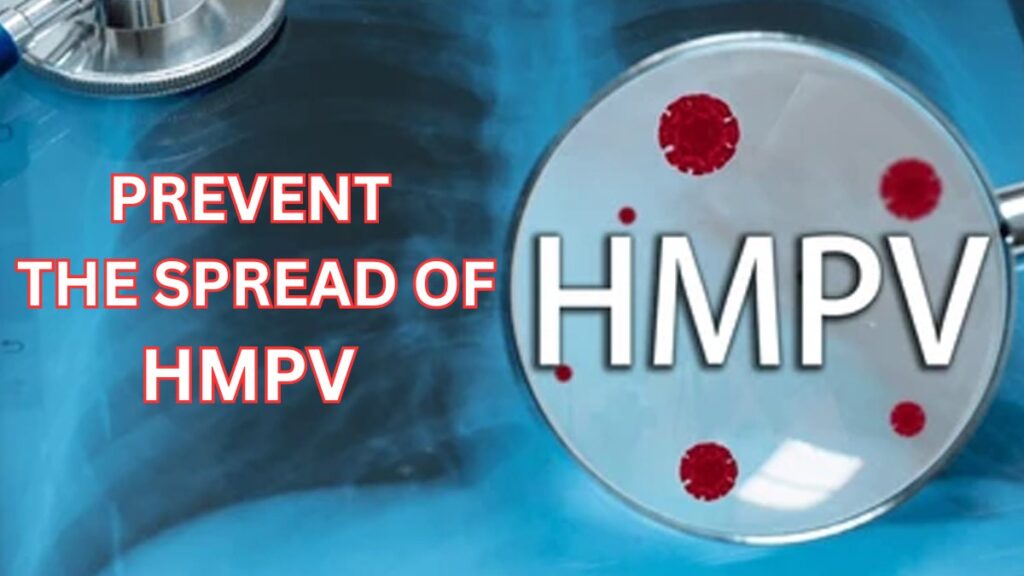If you are looking for Things To Keep in Mind to Mitigate the Spread of HMPV, then you are at right place.
Human Metapneumovirus (HMPV) is a respiratory virus discovered in 2001. It belongs to the Paramyxoviridae family, which also includes RSV (Respiratory Syncytial Virus).
HMPV primarily targets the respiratory system, causing infections that range from mild cold-like symptoms to severe respiratory illnesses.
The virus spreads via respiratory droplets, direct contact, and contaminated surfaces, making it highly transmissible.
Symptoms of HMPV Infection
Symptoms of HMPV include coughing, nasal congestion, fever, and wheezing. In severe cases, it can cause bronchitis or pneumonia, especially in children, older adults, and individuals with compromised immune systems.
These symptoms are similar to those of the flu and RSV, which can make diagnosis challenging without specific testing.

Why is HMPV a Concern?
Vulnerable Groups Affected by HMPV
Certain groups are more at risk of severe HMPV complications, including:
• Infants and young children.
• Elderly individuals.
• People with chronic illnesses such as asthma, COPD, or heart disease.
• Immunocompromised individuals, such as those undergoing chemotherapy or with HIV/AIDS.
How It Spreads and Its Impact on Communities
HMPV spreads quickly in crowded settings like schools, nursing homes, and workplaces. This rapid transmission can lead to significant disruptions, including increased absenteeism, strain on healthcare resources, and higher hospitalization rates during outbreaks, especially in winter months.
Also Check: 10 Easy Ways to Stop Worrying (Working Methods)
12 Key Strategies to Mitigate the Spread of HMPV
1. Practice£Good Hand Hygiene
Importance of Frequent Handwashing
Handwashing is one of the most effective ways to prevent HMPV transmission. The virus can survive on surfaces for hours, and touching these surfaces can transfer the virus to your hands, which can then reach your face.
Proper Handwashing Techniques
Follow these steps for effective handwashing:
• Use soap and water.
• Scrub for at least 20 seconds, including under nails and between fingers.
• Rinse thoroughly and dry with a clean towel.
If soap and water aren’t available, use hand sanitizer with at least 60% alcohol.
2. Maintain Respiratory Etiquette
Cover Your Mouth and Nose When Sneezing or Coughing
Always cover your mouth and nose with a tissue or the inside of your elbow when sneezing or coughing. This reduces the spread of respiratory droplets, which are the primary means of HMPV transmission.
Dispose of Tissues Properly
Immediately throw used tissues into a covered trash bin and wash your hands afterward. Proper disposal minimizes contamination and prevents the virus from spreading to surfaces and other individuals.
3. Avoid Close Contact with Infected Individuals
Recognize Symptoms in Others
Be alert for symptoms such as coughing, fever, or fatigue in others. Avoiding close contact with symptomatic individuals is key to reducing your risk of infection.
Implement Quarantine Measures
If someone in your household is infected, encourage them to stay in a separate room and avoid shared spaces. Quarantine measures, like using separate bathrooms when possible, can help prevent the virus from spreading within the home.
4. Clean and Disinfect Surfaces Regularly
Focus on High-Touch Surfaces
High-touch surfaces such as doorknobs, light switches, countertops, phones, and keyboards are hotspots for germs. Cleaning and disinfecting these areas daily is critical in reducing viral spread.
Use Effective Cleaning Agents
Choose disinfectants approved by health authorities, such as those recommended by the EPA. Always follow the manufacturer’s instructions for safe and effective use.
Also See: 15 Ways to Stay Present and Stop Overthinking in 2025
5. Stay Home When Sick
Recognize When to Isolate Yourself
If you experience symptoms like fever, cough, or difficulty breathing, it’s important to stay home. Isolating yourself prevents exposing others to the virus and allows you to recover without complications.
Tips for Working or Studying from Home
To maintain productivity while isolating:
• Set up a comfortable, distraction-free workspace.
• Communicate with your employer or teachers about your condition.
• Use online tools for meetings, classes, and assignments.
6. Wear Masks in Crowded Areas
Choose the Right Mask
Masks are highly effective in reducing the spread of respiratory droplets. Opt for masks that fit snugly and cover your nose and mouth, such as surgical masks or N95 respirators.
Proper Mask Usage and Disposal
• Wear masks in crowded or poorly ventilated areas.
• Avoid touching the front of the mask.
• Dispose of single-use masks properly and wash reusable ones regularly.
7. Get Vaccinated (If Available)
Current Developments in HMPV Vaccines
While there is no widely available vaccine for HMPV yet, researchers are working on developing one. Stay informed about updates from health authorities regarding vaccine availability.
Importance of Staying Up to Date
Vaccines, when available, are crucial for protecting high-risk populations and reducing community transmission.
8. Strengthen Your Immune System
Adopt a Healthy Lifestyle
Boosting your immune system can help your body fight off infections more effectively. Focus on:
• Eating a balanced diet rich in fruits, vegetables, and lean proteins.
• Staying physically active.
Prioritize Sleep and Manage Stress
Lack of sleep and chronic stress can weaken your immune system. Aim for 7-9 hours of sleep per night and practice relaxation techniques like meditation or deep breathing.
9. Monitor and Report Symptoms Promptly
Early Detection of HMPV Symptoms
Pay attention to early signs like cough, fever, or shortness of breath. Early detection can help prevent complications and limit the spread of the virus.
When to Seek Medical Advice
If symptoms worsen or you experience severe difficulty breathing, consult a healthcare professional immediately. Prompt medical intervention can prevent severe outcomes.
10. Educate Yourself and Others
Stay Informed About HMPV
Regularly update your knowledge about HMPV through reliable sources such as the CDC or WHO. Awareness helps you take appropriate precautions.
Share Information With Your Community
Educate friends, family, and colleagues about HMPV prevention. A well-informed community is better equipped to manage and mitigate the spread of the virus.
Long-Term Practices for Reducing HMPV Spread
11. Support Public Health Measures
Follow Guidelines from Health Authorities
Adhere to recommendations from public health officials, including mask mandates, vaccination drives, and quarantine protocols during outbreaks.
Participate in Community Programs
Engage in initiatives such as health workshops and vaccination campaigns to strengthen collective efforts against HMPV.
12. Develop Emergency Preparedness Plans
Prepare for Potential Outbreaks
Keep essential supplies like masks, disinfectants, and non-perishable food stocked in case of an outbreak.
Have a Family Action Plan
Establish a clear plan for managing illness within your household, including isolation protocols and access to medical care.
FAQs
1. What makes HMPV different from other respiratory viruses?
HMPV shares similarities with RSV but tends to affect older adults and children more severely.
2. Can HMPV be treated at home?
Mild cases can be managed with rest, hydration, and over-the-counter medications, but severe cases may require medical intervention.
3. Are children more vulnerable to HMPV?
Yes, young children, especially under the age of 5, are more likely to develop severe symptoms.
4. How effective are masks against HMPV?
Masks significantly reduce the spread of respiratory droplets, a primary transmission route for HMPV.
5. Is there a vaccine for HMPV yet?
While research is ongoing, no vaccine is currently available for public use.
Conclusion
Mitigating the spread of HMPV requires a combination of personal hygiene, community cooperation, and adherence to public health measures. By practicing these strategies, we can protect vulnerable populations, reduce healthcare burdens, and ensure a healthier community.











